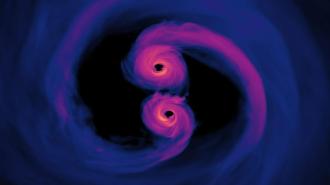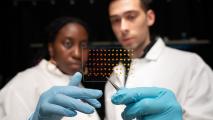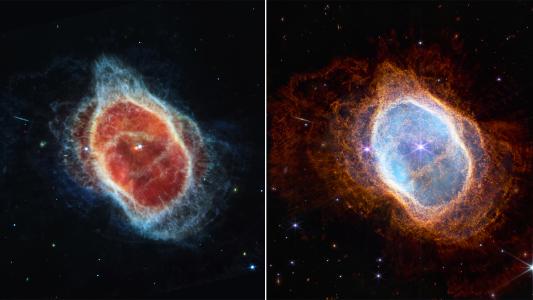The late Stephen Hawking’s black hole area theorem is correct, a new study shows. Scientists used gravitational waves to prove the famous British physicist’s idea, which may lead to uncovering more underlying laws of the universe.
The theorem, elaborated by Hawking in 1971, uses Einstein’s theory of general relativity as a springboard to conclude that it is not possible for the surface area of a black hole to become smaller over time. The theorem parallels the second law of thermodynamics that says the entropy (disorder) of a closed system can’t decrease over time. Since the entropy of a black hole is proportional to its surface area, both must continue to increase.
As a black hole gobbles up more matter, its mass and surface area grow. But as it grows, it also spins faster, which decreases its surface area. Hawking’s theorem maintains that the increase in surface area that comes from the added mass would always be larger than the decrease in surface area because of the added spin.
Will Farr, one of the co-authors of the study that was published in Physical Review Letters, said their finding demonstrates that “black hole areas are something fundamental and important.” His colleague Maximiliano Isi agreed in an interview with Live Science: “Black holes have an entropy, and it’s proportional to their area. It’s not just a funny coincidence, it’s a deep fact about the world that they reveal.”
The research team based their conclusions on the data from the gravitational waves spotted by Caltech and MIT’s Advanced Laser Interferometer Gravitational-Wave Observatory (LIGO) in 2015.
What are gravitational waves?
Gravitational waves are “ripples” in spacetime, predicted by Albert Einstein in 1916, that are created by very violent processes happening in space. Einstein showed that very massive, accelerating space objects like neutron stars or black holes that orbit each other could cause disturbances in spacetime. Like the ripples produced by tossing a rock into a lake, they would bring about “waves” of spacetime that would spread in all directions.
As LIGO shared, “These cosmic ripples would travel at the speed of light, carrying with them information about their origins, as well as clues to the nature of gravity itself.”
The gravitational waves discovered by LIGO’s 3,000-kilometer-long laser beam, which can detect the smallest distortions in spacetime, were generated 1.3 billion years ago by two giant black holes that were quickly spiraling toward each other.
Confirming Hawking’s black hole area theorem
The researchers separated the signal into two parts, depending on whether it was from before or after the black holes merged. This allowed them to figure out the mass and spin of the original black holes as well as the mass and spin of the merged black hole. With this information, they calculated the surface areas of the black holes before and after the merger.
“As they spin around each other faster and faster, the gravitational waves increase in amplitude more and more until they eventually plunge into each other — making this big burst of waves,” Isi elaborated. “What you’re left with is a new black hole that’s in this excited state, which you can then study by analyzing how it’s vibrating. It’s like if you ping a bell, the specific pitches and durations it rings with will tell you the structure of that bell, and also what it’s made out of.”
The surface area of the resulting black holes was larger than the combined area of the original black holes. This conformed to Hawking’s area law.
This article was reprinted with permission of Big Think, where it was originally published.





